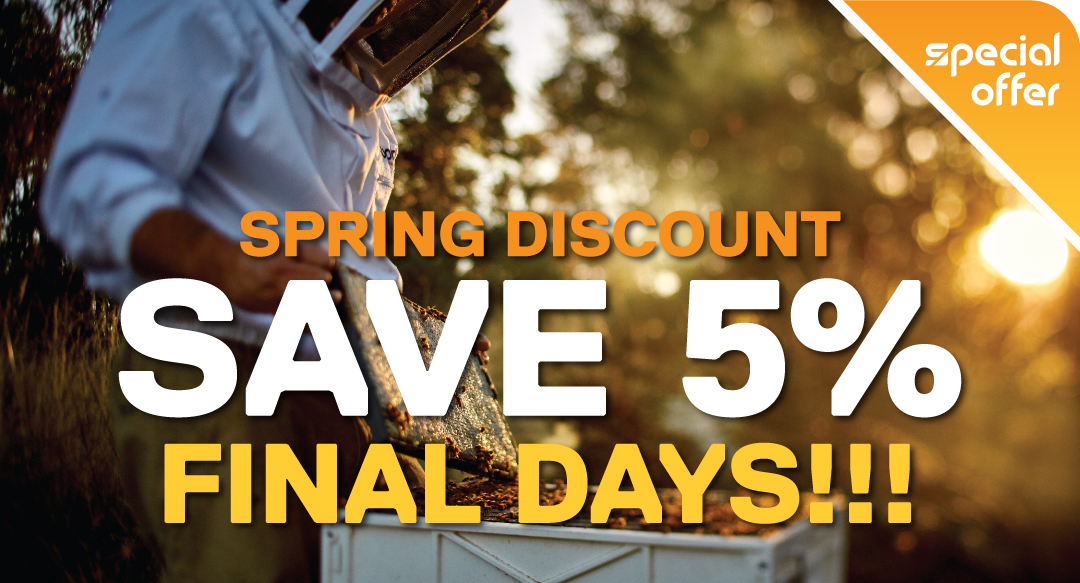Are you ready for Spring?
The sun is shining, the birds are singing, the flowers are blooming and there’s a quiet buzz eminating from your hive and that can only mean one thing…
SPRING IS HERE!
Now’s the time to get busy (like a bee) and make sure your colony and apiarist equipment is healthy and ready for the productive times ahead. With the weather starting to heat up and the flowers beginning to blossom, we here at Nuplas Apiarist Supplies are getting ourselves ready for the upcoming beekeeping season, and we hope you are too.
Spring can be one of the busiest times of year for bees (and beekeepers alike) so making sure your hive and bee colony is healthy becomes super important. Spring is the season when new colonies are started, and established colonies come back to life – as days get longer and milder, established hives comes alive, exploding in population. The queen steadily lays more and more eggs, ultimately reaching her greatest rate of egg laying, drones begin reappearing, hive activity starts hopping and nectar & pollen begins coming into the hive thick and fast.
It’s important to have your hives ready for the upcoming beekeeping season, so here is a to-do to help you get prepared.
Spring to-do list
Evaluating the status of your colonies and helping your bees get into shape for summer months involves a little work.
Below is a list of some chores to help you stay on track and in control for the upcoming beekeeping season.
1. Conduct an early bird inspection
Colonies should be given a quick inspection as early in the spring as possible. The exact timing depends upon your location (earlier in warmer zones, later in colder zones). If the weather is cold enough that you need a heavy overcoat, it’s too cold to inspect the bees.
2. Determine whether your bees made it through the winter
Do you see the cluster? Clustered bees should be fairly high in the upper deep hive body. If you don’t see them, can you hear the cluster? Tapping the side of the hive and putting your ear against it, listen for a hum or buzzing.
3. Check to make sure that you have a queen
Look down between some of the frames. Do you see any brood? That’s a good sign that the queen is present. To get a better look, you may need to carefully remove a frame from the center of the top deep.
4. Check to ensure the bees still have food
Looking down between the frames, see if you spot any honey. Honey is capped with white cappings (tan cappings are the brood). If you see honey, that’s great. If not, you must begin supplementary feeding your bees.
5. Feed the colony
A few weeks before the first blossoms appear, you may need to begin feeding your bees (regardless of whether they still have honey).
6. Reverse your hive bodies.
7. Anticipate colony growth
Don’t wait until your hive is “boiling” with bees. Later in the spring, before the colony becomes too crowded, create more room for the bees by adding a queen excluder and honey supers. Be sure that you remove the feeder.
8. Watch out for indications of swarming
Inspect the hive periodically and look for swarm cells.
As referenced by Howland Blackiston

TIME IS RUNNING OUT!!! We are offering a special 5% Spring Discount to all our customers.
Simply enter SPRINGBEE18 at checkout and save 5% off your total purchase.
Valid until 30 September, 2018.
